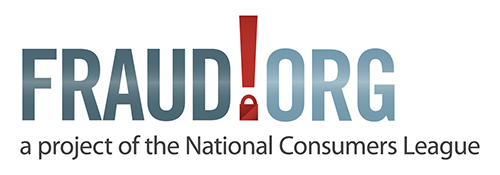Scammers have a new target: Smart TVs
Just like any other device connected to the internet, TV’s can be a vector for scammers to use to try and steal money or personal information from their victims. At Fraud.org, we’ve seen a recent burst of reports regarding fraudsters finding victims through smart televisions.
The scam works like this: When connecting a smart TV to a streaming service like Hulu, Netflix, or HBOMax, consumers are often required to go to an activation URL (e.g. www.streamingservice.com/activate) on their smartphone or computer. Once there, they are usually required to enter the code that appears on their smart TV to link the device to a streaming account.
Capitalizing on this, scammers are setting up lookalike sites with a URL nearly identical to the authentic one—sometimes with just one character difference. When a consumer makes a typo in attempting to access the genuine website displayed on their streaming device, they are instead taken to the fraudulent page. Once on this copycat website, fraudsters will receive any login credentials, personal information, credit card numbers, and payments that the consumer may provide.
In other cases, the scam appears to begin when a consumer uses a search engine to look up activation information for their smart TV (e.g. “Roku activation”). Scammers buy ads or otherwise get their fake activation websites to appear high in search results. When the consumer clicks on the bogus link, they may be directed to a website or receive a pop-up asking the user to pay an activation fee. To be clear, Roku and most other streaming device creators do not charge activation or setup fees.
Scammers also use pop-ups to direct the consumer to call a phone number, usually claiming it’s to finish setting up the user’s account, resolve an error, or fix network issues. This often results in another charge to the consumer, a request for personal information, or both. Furthermore, once fraudsters have a potential victim’s phone number, they are relentless in their pursuit to either complete a scam or conduct another if the first attempt was successful. It is very common for consumers to receive multiple, sometimes dozens, of calls following initial contact.
Here are a few tips to stay safe while navigating your smart TV:
- Scrutinize fees. Whether it’s an activation fee for your Roku (which doesn’t actually require a setup fee) or an alert to resubscribe for a service, fraudsters are always looking for clever ways to charge money. Double check whether the fee matches what the real service charges, or if there is even a charge at all. Additionally, you can log in to a streaming account on another device to check if the subscription has lapsed and take the appropriate steps once you’re sure you have reached an authentic website.
- Ensure the URL for the website you’re accessing is spelled correctly. Whether on your TV, phone, or laptop, just one wrong letter can take you to a fraudulent website. Since these copycat sites can look very similar (or identical) to the true destination you were expecting, carefully inspect that the URL you’re going to is the right one.
- Double check any phone numbers that appear on your screen. Customer support numbers should be easy to find on genuine companies’ websites.
- Don’t let strangers control your device. While this mostly applies to computers, providing control to strangers over your device gives them access to personal and financial information. No authentic support will request remote access to your smart TV.
Be an ally in the fight against fraud!
If you suspect that you or someone you know has become a victim of a smart TV scam or any other fraud — report it at once. You can file a complaint at Fraud.org via our online complaint form. We’ll share your complaint with our network of law enforcement and consumer protection agency partners who can investigate and help put fraudsters behind bars.








